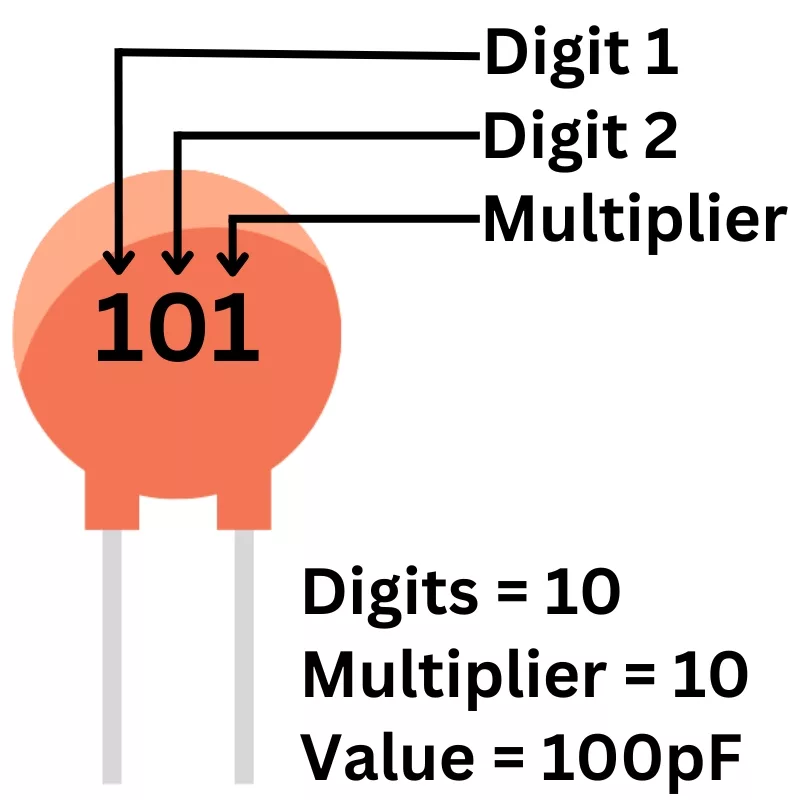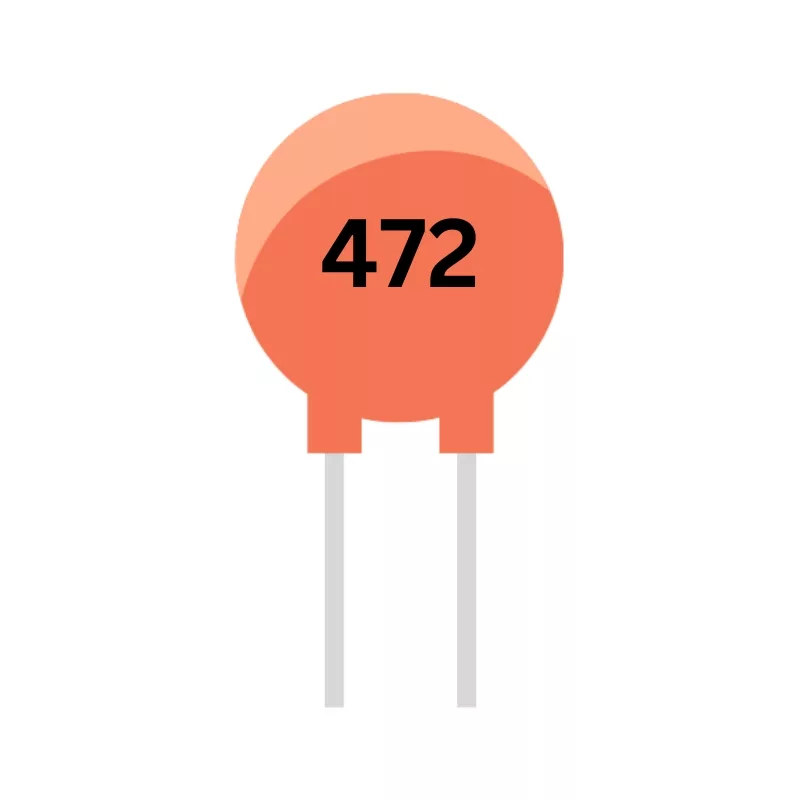

Ceramic capacitors use the same coding system that SMD resistors use, except that instead of being in units of whole ohms, numbers are in picofarads. The first two numbers indicate the value, while the third number indicates the number of times that number is multiplied by 10. Again, the best way to see how this works is to see a few examples.

In this case, the first two numbers are 1 and 0, meaning the number value is 10. The third number is 4, meaning that the number 10 is multiplied by 10 four times. As such the value of this capacitor is 100,000, and as ceramic capacitors are done in values of picofarad, the value of this capacitor is 100,000pf, or 100nF.

In this case, the first two numbers are 2 and 7, meaning that the number value is 27. As there is no third number, the number value isn’t multiplied by anything. As such, the value of this capacitor is 27pF.

In this case, the first two numbers are 4 and 7, meaning that the number value is 47. The third number is 2, meaning that the number 47 is multiplied by 10 twice. As such, the pF value of the capacitor is 4,700pF, or 4.7nF.
